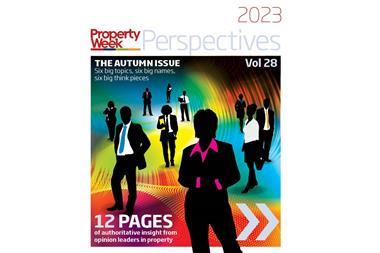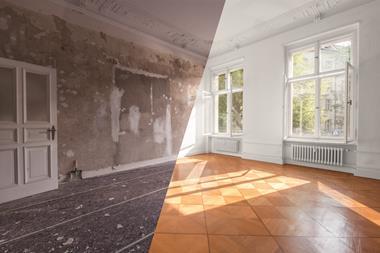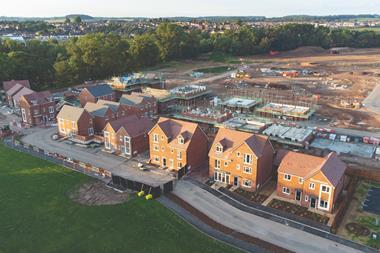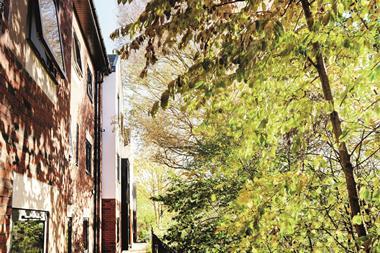In a market that presents challenges for all, assets have to be worked harder and greater analysis is required to identify sites where value can be realised. At Fladgate we work to help our clients identify opportunities in the market.

As a result, we are running our Unlocking Opportunities In Real Estate series, which includes analysis articles, starting with the launch of our Brownfield Campaign. We invite you to visit our Fladgate Brownfield webpage, follow our campaign online and join the discussion. #FladgateBrownfield.
Increased environmental awareness is forcing many of us to challenge ourselves and reflect on our own consumerism. Perhaps it is the thought that your children will grow up to live in a world where there are no tigers living outside captivity, or the realisation of how dependent all plant life is on threatened insects, such as bees. But whatever the reason, a growing number of us have moved from a position of simply caring to examining our habits to effect much-needed change.
Coupled with this is an increased trend of urbanisation in the UK over the coming decades and a political desire to meet new housing targets. The effect is going to be an increased need and desire to reuse land to meet our changing requirements.
Business sense often goes hand in hand with recycling land – a lot of brownfield land is near urban centres, with good infrastructure and utility connections; yet at the moment brownfield land development remains a niche area. This has prompted Fladgate to run a client contact survey to examine why whilst some clients are highly specialised at realising value from brownfield development, many others have yet to dip their toe in the market.
The results of our survey will be published on our brownfield webpage but in essence it shows that a large majority (79%) of our clients see brownfield investment becoming more attractive over the next three years. The reasons for this include:
- Lack of alternatives
- High demand for residential and the housing supply shortage
- High demand for logistics warehouse space
- Innovation in addressing contamination
- Greater investment return
- Greater emphasis on sustainability
- Consumer preference for central locations.
Looking at our active clients in this sector, it is apparent across the board that they are specialists, have vision and are often innovative in their approach.
The development of Minavil House in Alperton, north-west London, by the property group owned by Peter Mahoney is one example. This involved the purchase of an ex-industrial site owned by Lidl and its development as a 26-storey tower, comprising a new Lidl store, 90% affordable housing, a café and flexible office and workshop space. The site has fantastic transport links, being next to Alperton underground station on the Piccadilly line.
This is an example of a developer with vision adding value and achieving that by responding to the demand for much-needed, good-quality affordable housing. Making that vision a reality involved co-ordinating a large number of parties (neighbouring owners, UK Power Networks, Lidl as seller and store operator, and a housing association to name a few).

Stephen Lewis, head of real estate at Fladgate, who advised the group, says: “A developer has to negotiate with multiple parties and bring these all to fruition at a single point in time. As lawyers, our role is to provide expert project management for clients and help them structure their deal to achieve their objectives.”
U+I’s development of The Old Vinyl Factory, Hayes (pictured) – the former EMI plant where records by The Beatles and Pink Floyd were once pressed – is a unique example of how a one-of-a-kind neighbourhood can be shaped. The 18-acre site is being developed as office buildings, new homes, innovation and education centres, restaurants, shops, a gym, cinema and live music venue, while not forgetting the site’s heritage.
Hollie Docherty, senior associate and regeneration specialist in Fladgate’s construction team, says: “This development is a perfect example of regeneration and placemaking.” For more information visit www.theoldvinylfactory.com.
Site maximisation
A great example of site maximisation is Weston Homes Group’s redevelopment of the Tesco site at Goodmayes in Ilford, east London. Weston Homes plans to relocate the existing Tesco store and parking, making more efficient use of the site to build multiple towers, including 1,300 homes as part of a mixed-use development.
One complexity of the negotiation with Tesco was ensuring continuity of trade (including appropriate parking and servicing) throughout the development. Fladgate chairman Richard Reuben, who is advising Weston Homes, says: “Our role was to assist our client in agreeing a programme of works that accommodated the needs of Tesco and, as with any development of this scale and complexity, our job is to keep a firm grip on all the separate strands, bring everything together and help our client drive the project forward with momentum.”
Meanwhile, Strawberry Star’s development of Lu2on (formerly the Vauxhall Motors factory in Luton) is a prime example of reuse of land to provide much-needed new housing. Fladgate corporate partner Marc Sosnow says: “Strawberry Star has a clear vision to deliver quality homes at lower values for first-time buyers living in and around London. This 6.8-acre residential site will include a hotel, medical and wellbeing centre as well as retail and leisure. It is an example of how effective redevelopment of brownfield sites can breathe life into an area and create a community.”
”Business sense often goes hand in hand with recycling land – a lot of brownfield land is near urban centres, with good infrastructure and utility connections”
Few brownfield developers are more sophisticated than Quintain. In developing the various phases of its Wembley Park project, the scale and variety of land uses involved meant that the developer had to address the full range of risks presented by brownfield sites.
An added complexity for Quintain has been the interaction of its development programme with the footfall generated by Wembley Arena and Wembley Stadium. Deliveries to Quintain’s site have had to be controlled around events and consequently there is a site-wide logistics plan to facilitate crowd movement and parking at events.
At Fladgate we can see that specialists in brownfield redevelopment can really realise value. The results of our survey tell us that the perceived risks with brownfield sites include:
- Planning
- Contamination
- Site constraints
- Rights of light
- Utilities
- Third-party consents
- Infrastructure
- Historic rights and restrictive covenants
- Unregistered pockets of land
- Squatters and vandals.
In the coming weeks Fladgate’s analytical articles on these topics will drill down further into how we can help our clients navigate these risks effectively. We will examine what gives our developer clients their edge and how familiarisation with these risks can help encourage investors and financiers to become more active in this market.
Our campaign will uncover an opportunity to align innovation and entrepreneurship with much-needed reuse of land and better use of space to meet the needs of our changing society.
For more information visit www.fladgate.com
About Fladgate
Fladgate is an advanced, commercially astute international law firm with a long heritage of delivering high-quality legal advice. We have been providing the full suite of legal solutions to businesses and private clients for more than 250 years. Today we are one of the UK’s top 100 law firms, with over 80 partners and a reputation for providing solutions that work.
Topics
PW Perspectives: industry responds to changing needs
- 1
- 2
- 3
- 4
- 5
- 6
 Currently reading
Currently readingRecycling land benefits developers and society
- 7
- 8
- 9
- 10







































No comments yet